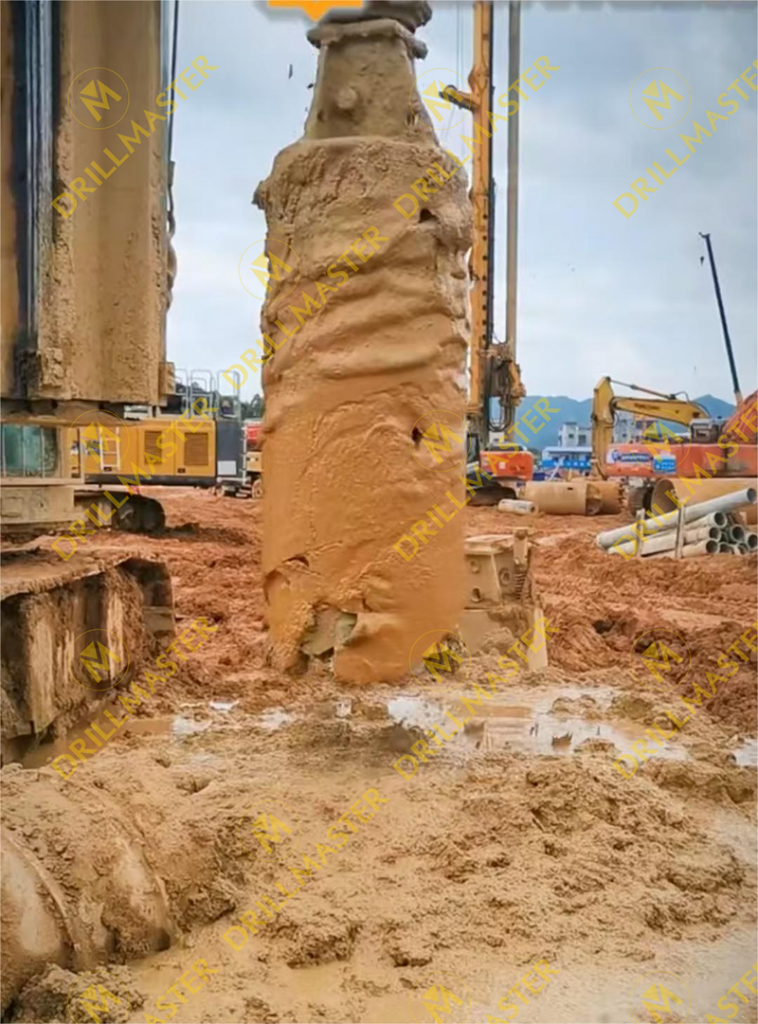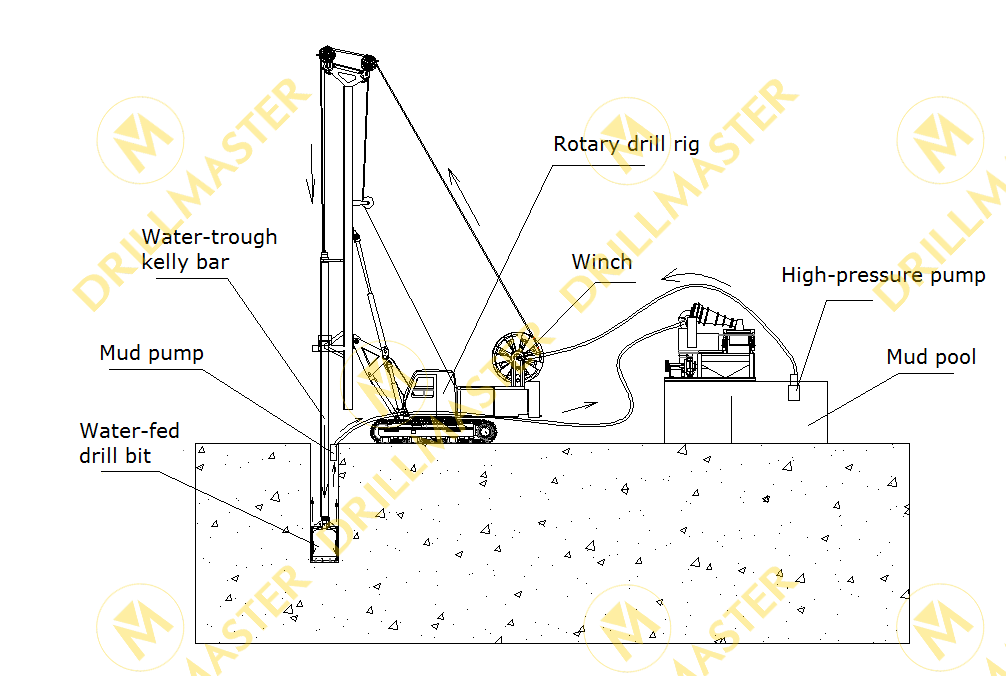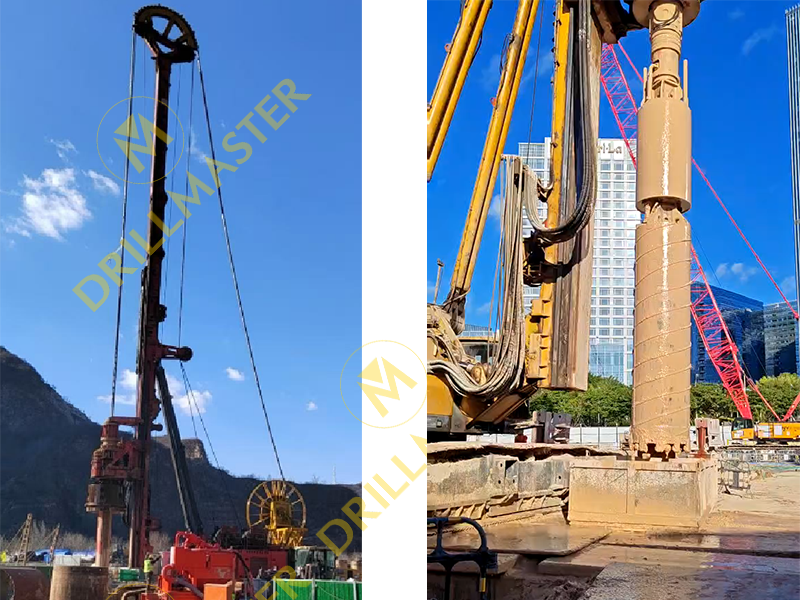E-mail: [email protected] Whatsapp: +8613647327093 Tel: +86-731-8403-0163
E-mail: [email protected] Whatsapp: +8613647327093 Tel: +86-731-8403-0163
During the drilling process of the rotary drilling rig, severe bit balling occurs, hindering cuttings removal and reducing drilling efficiency. Additionally, traditional cuttings removal methods have limitations: low efficiency, restricted adaptability, and severe equipment wear due to residual bottom hole sediment.

To address these issues, a technique combining rotary drilling rig and roller bits with positive circulation mud slag removal has been developed. Its principle involves using roller cones to break formations in hard strata, while simultaneously flushing cuttings out of the hole via direct mud circulation.

The roller cone bit features a high-pressure water jet system. Through rotation and the rolling/shearing action of its teeth, it breaks hard rock or dense gravel layers into small particles. The broken cuttings are continuously flushed to the surface by the drilling mud during the drilling process. After filtration through a desander, this ensures the roller cones always contact fresh rock, preventing repeated grinding damage and thereby enhancing the efficiency.
1) Rig Positioning & Leveling:
Move the rotary drilling rig to the pile location, level the machine, and inspect the mud circulation system and roller cone bit installation.
2) Mud Preparation:
Prepare mud with suitable density, viscosity, and colloid content according to formation conditions to ensure wall stability and cuttings-carrying capacity.
3) Lowering & Drilling:
Start the mud pump to establish direct circulation.
Activate the rotary drive to lower the roller cone bit and commence rock breaking.
4) Cuttings Transport Upward:
Mud jets from the bit flush the bottom hole cuttings, carrying them upward through the annular space to the surface.
5) Cuttings Removal & Mud Purification:
Mud and cuttings flow into a settling pit or desander. Solids settle, and the cleaned liquid returns to the mud pit for reuse.
6) Iterative Drilling:
Drill progressively to the design depth, continuously monitoring mud properties and drilling rate.
7) Hole Completion Check:
Upon reaching design depth, clean the hole and inspect hole diameter, verticality, and sediment thickness.

1) Suitable for medium-hard to hard formations (e.g., sandstone, weathered granite).
2) Unsuitable for very loose sand layers (prone to fluid loss) or extremely hard, intact rock masses (low ROP).
1) Enhanced Drilling Efficiency & Reduced Cost:
The roller cone bit employs multiple rock-breaking mechanisms (rolling, shearing, grinding), enabling efficient penetration of medium-hard to hard strata, reducing drilling time per meter. Combined with direct circulation, cuttings are removed in real-time, maintaining a clean bottom hole. This effectively prevents re-cutting due to sediment accumulation, boosting net drilling speed. Furthermore, reduced fuel and labor consumption optimizes overall project duration and total cost.
2) High-Quality Borehole:
Continuous cuttings removal prevents large particles from affecting hole accuracy at the bottom. The stabilizing effect of the mud prevents borehole shrinkage or irregular deformation, maintaining design diameter and verticality. The high bottom hole cleanliness minimizes sediment thickness, providing optimal conditions for subsequent rebar cage lowering and concrete pouring. This reduces risks of concrete segregation and pipe blockage, improving pile foundation quality from the source.
3) Sustained Operations & Reduced Tripping:
The direct circulation process allows simultaneous drilling and cuttings removal, ensuring operational continuity. The mud pump delivers mud down the drill pipe to the bottom hole, flushing and carrying cuttings upward along the annulus. After treatment (settling/desanding), mud is recycled. This minimizes frequent tripping (pulling the drill string), reducing equipment idle time and non-productive time, while lowering mechanical fatigue/wear and extending tool life.
4) Effective Wall Stabilization & Enhanced Borehole Stability:
During construction, the mud forms a uniform filter cake on the borehole wall, resisting external water pressure and lateral earth/rock pressure, preventing cave-ins, spalling, and fluid loss. Adjusting mud density, viscosity, and colloid content adapts to varying formations (e.g., enhancing wall stability in sand to reduce lost circulation risk). Stable borehole walls ensure drilling safety and improve the success rate of subsequent pile construction, lowering accident probability.
1) Install desanders for mud recycling and centralized cuttings disposal.
2) Strictly control mud density, viscosity, and colloid content within optimal ranges to prevent hole collapse or bit burial.
3) Maintain continuous direct circulation during drilling; avoid pump stoppage causing cuttings blockage.
4) Regularly inspect roller cone bits for wear and replace when necessary.
5) Ensure the cuttings removal system remains unobstructed; clean settling pits promptly.
Now, Drillmaster provides the all-in-one solution including all the above products and modification services. Welcome to contact us if any needs or interests.
Our professional sales and experienced engineers will provide you solutions based on your needs.
WhatsApp: +8613647327093

Email: [email protected]
Contact Us
